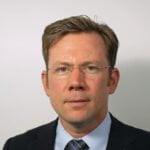Linux: A cornerstone for Software Defined Infrastructure


The spread of Linux in both the SAP and non-SAP environments continues to grow strongly. Recently published figures from IDC attest to record server sales.
The fact is that Linux is preinstalled on a very large proportion of all systems sold. Linux has also long since established itself in the SAP environment. The Unix-Linux shift in the NetWeaver-based systems with Any DBs contributed to this, as did Hanaization or the use of Hana-based SAP application solutions, for which Linux is known to be the default.
Quite a few SAP user companies that are replacing ERP classic with S/4 have already completed the Hana migration, including the migration from Unix or Windows to Linux, coupled with an Any DB switch.
Another group of SAP customers is in the planning stages or in the middle of the SAP transformation process. Although Linux also means certain innovations, Linux is not so new in the SAP environment.
Next year will mark the 20th anniversary of the SAP Linux Lab - the starting point or crystallization point for numerous developments and innovations for Linux and open source use in the mission-critical SAP environment.
In addition to Linux, these include OpenStack, container technologies with Kubernetes, enterprise storage with Ceph, and application delivery based on Cloud Foundry.
Levers for digitization
Linux and open source are closely interwoven with digital transformation (or digitization). Which leads straight to the topic of Software Defined Infrastructure (SDI).
Finally, with an SDI as a flexible and open infrastructure environment based on software, it is possible to dovetail internal IT landscapes and external cloud services at will or in an automated manner. And this is independent of an underlying infrastructure with server, storage and network.
In concrete terms: In the hybrid cloud era, a Software Defined Infrastructure can be used to obtain data from the outside or provide data from the inside to the outside as part of digitized processes, for example as part of customer-supplier relationships.
According to a user survey, the SDI focus is predominantly on open source or open standards. For cost reasons, to avoid vendor lock-in, because of the high innovation potential of open source, or also because of simplified system integration of different open source solutions.
SDI solutions available
For some time now, SAP and Suse have been working together to promote the use of open source and SDI. Suse Linux Enterprise Server (Suse) for SAP Applications plays an important role as a technology-compatible operating system platform for various operating concepts (on-premise or off-premise/cloud).
As well as other SDI open source solutions from Suse for SAP use to underpin digitization challenges with an agile and modern infrastructure in line with requirements:
Suse OpenStack Cloud (Private Cloud/IaaS), Suse Cloud Application Platform (PaaS/Cloud Foundry), Suse CaaS Platform (Container Management/Kubernetes), Suse Enterprise Storage (Ceph) or Suse Manager (Enterprise System Management). And all bundled in the "Suse Software Defined Infrastructure".
The data center transition with Software-Defined-Infrastructure solution components in the SAP environment is predefined. SDI open source solution components are available or can be used. It makes little sense to avoid the topic of SDI or to put it on the back burner.







